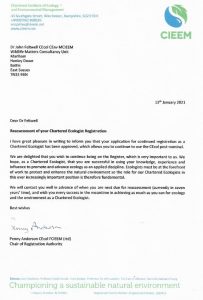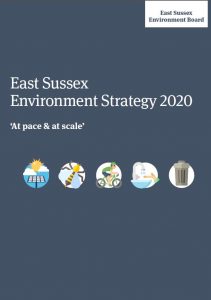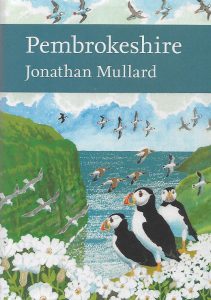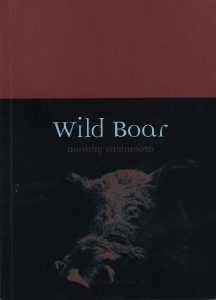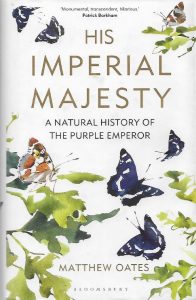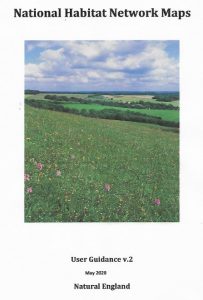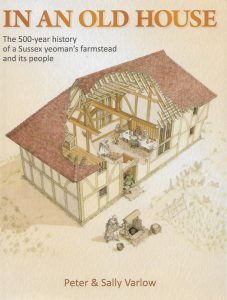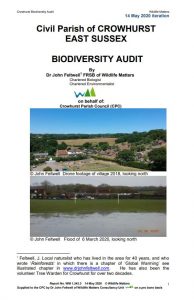Pollinators & Pollination 2021
Pollinators & Pollination. Nature and Society. By Jeff Ollerton. Published by Pelagic Publishing. ISBN 978-1-78427-228-9. 2021. 286pp. £24.25
As the blurb states Prof Jeff Ollerton is ‘one of the world’s leading pollination ecologists’ who works at the University of Northampton. Most of his 30-year’s research is poured into this major work and it has plenty of graphs as an evidence base for his ideas and theories. He states that he has pitched the book ‘at a very broad audience, and is intended to be comprehensible to anyone with an interest in science and the environment.’ He has succeeded admirably in this aim, and it covers an area not explored by other bee experts whose work is discussed. This is the first time I have seen a blanket acknowledgement for all his academic contacts rather than mentioning bee experts by name. This is not just about bees and pollination – though it may seem that way as Apis mellifera is a major pollinator – it is about all pollinators, birds, reptiles, mammals and invertebrates. There are an estimated 350,000 terrestrial vertebrates and invertebrate species that move pollen, for the estimated 352,000 species of flowering plant: so flowering plants are well catered for and co-evolution is patently evident. Invertebrates are the commonest pollinators: the estimated number of species, from the largest to the smallest as listed, are Lepidoptera (141,500 species), through Coleoptera (77,300), Hymenoptera (70,000), Diptera (55,000) and Thysanoptera (1,500 species).The book has 14 chapters ranging from ‘To be a flower’ to ‘Agricultural Perspectives’ to ‘New Bees on the Block’ – mostly about the Tree Bumblebee and The Ivy Bee, and the 17 species of bee, wasp and true-flies that have turned up in Britain since 2000. A lot of the collation has been by BWARS. He even has a chapter on ‘The politics of pollination.’ There is a section on neonics in which Ollerton reminds us they are chemically similar to naturally occuring nicotine, which used to be used a long time ago. He debates all sides of the issue, but unfortunately just missed the latest UK authorisation of neonics prior to publication. In reviewing the literature he shows that some recent research ‘strongly implicated as a likely driver of those declines.’ It is good to see that Buglife-The Invertebrate Conservation Trust is mentioned, as well as the National Pollinator Strategy. As the author states ‘I have tried to provide a personal, state-of-the-art overview of what pollinators are, where they are to be found, how they contribute to the pollination of both wild and agricultural plants, supporting the wild ecosystems…’ etc. There are just a few colour photographs dotted about the book, but it really offers extended essays on topics rather than pretty photos that can be found in a host of other bee books. The References run to 32pp and there is an index.
ESCC’s Enviro.. Strategy 2020 & SLNP Natural Capital,2019
ESCC’s Environment Strategy; At pace & at scale’ (2020)
The ESCC Environment Strategy was published in two parts in 2020, the Strategy (16pp) and the Appendix (38pp) dated March 2020 and June 2020 respectively.[1] It replaces the first Environment Strategy for East Sussex adopted in 2011. A lot of rhetoric, national dilemmas, and UK concerns are repeated throughout this document. Turning to East Sussex, it states that 470 species that are globally threatened in the county, or in rapid decline. The Strategy is updated to be in line with the 25 year Environment Plan (2018) and Parliament’s declaration of Climate Emergency in 2019.
The Strategy’s vision is ‘protect and enhance our natural and built environment for current and future generations and tackle and adapt to climate change.’ That is a familiar mantra that goes back decades and is invested in UK law. ‘conserve and enhance’. The Strategy is disappointing in what it does not cover. There are no references to nature conservation or soil conservation, SSSIs, BAPs, Ancient Woodland, Wood-pasture, or surprisingly nothing major on biodiversity. It acknowledges the impact on woodlands in East Sussex (which has more than most counties), especially the impact on associated woodland habitats ‘the loss of valued areas for recreation.’
Natural Capital is mentioned, and is comprehensively dealt with in the Appendix; whilst everyone is nervously awaiting the result of the Environment Bill in its final deliberation on net gain in which way to jump. Nationally, it is interesting to note that OFWAT are aiming to ‘protect and improve at least 6,000km of waterways, and protect and improve 1,800ha of protected nature conservation sites by 2025. One hopes this will trickle down to East Sussex. This will clearly be a rolling strategy for East Sussex, but the document as presented, does not have a functioning feedback email address, and the Team Manager is aware of the various typos and states that further information on nature conservation is to be found in the Sussex Local Nature Partnership document ‘Natural Capital Investment Strategy for Sussex 2019-2024.’ At present, it is a disappointing document.
[1] East Sussex County Council, 2020. Is in two parts i) ‘The Environment Strategy’, dated March 2020 (16pp) and ‘The Technical Appendix to the Environment Strategy’, dated June 2020 (38pp).
https://www.eastsussex.gov.uk/media/15587/east-sussex-environment-strategy-2020.pdf
https://www.eastsussex.gov.uk/media/15589/east-sussex-environment-strategy-2020-technical-appendix.pdf (accessed 01 December 2020).
Note: The above ESCC Environment Strategy 2020 relies upon the following publication for nature conservation issues, facts and figures.
Natural Capital Investment Strategy for Sussex, 2019-2024. Sussex Local Nature Partnership, December 2019. Final Version. (adopted by Sussex LNP October 2019). 73pp. 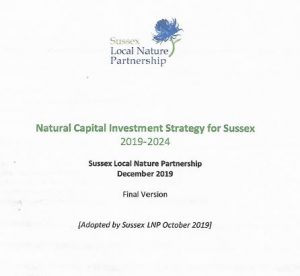
Twenty-four Sussex Local Nature Partners (SLNP) participated in drawing together this 73pp compilation of Natural Capital Investment Strategy in Sussex. Both East and West Sussex are lumped together, and obvious nature conservation groups have been involved such as Sussex Wildlife Trust, CPRE, CLA, EA, NE, NFU, SDNPA, ESCC (but no LPAs). This reviewer has been told (Dec 2020) by the on-line administrator of The ESCC Environment Strategy 2020 that it relies upon this document for all the information on nature conservation that is not within the Environment Strategy. It is just over a year since this document was produced (adopted by SLNP October 2019), but it still has not published the assets that it is still counting up. Sussex’s assets are its habitat types, and this document lists these which it classifies as ‘natural capital asset types.’ The assets it is relying on are on page14, which lists, for instance four types of Ancient Woodland.
However, it does not list ‘Wood-pasture & Parkland BAPs’ which are Priority BAPs – a serious error. These are associated woodland habitats of ancient woodland recognised by Natural England. There is a risk that the eventual quantum of assets will only be based on some of the statutorily protected areas such as NNRs, SSSIs, SACs, SPAs and Ramsars whilst other important habitats, protected by other statutory instruments will not be represented in the overall audit.
The omission is replicated in Table 2a (p.68) ‘Terrestrial Assets’, where at risk habitats are highlighted in red. They do note that woodland is under risk of ‘loss of valued areas for recreation’. There is not a word about ‘Wood Pasture and Parkland BAPs’. It is as if the law embedded in NERC (2006) – a statutory act – is not recognised.
The report has produced various useful maps across Sussex (too small to expand) and an intriquing ‘Woodland Heathmap’. This shows that there are three areas across the Sussexes, one in the east, one in the north central area of Sussex and one in the east. This is where there are:
‘existing woodland concentrations in Sussex,’ In these areas what is proposed is ‘In terms of biodiversity benefit, new woodland plantings regeneration in the areas of high woodland concentration can be used very beneficially to expand and connect woodland fragments and thus strengthen woodland ecological works.’
Alarmingly, the document states that ‘At time of writing this strategy, no ‘valuations’ have yet been published for the natural capital of Sussex.’ (http://sussexlnp.org.uk/what-is-natural-capital/). This is a concerning relevation. Without any valuations there can be no informed or considered view, so the report is not supported by any evidence. Valuations are awaited to inform the strategy in Sussex, whilst the climate emergency continues.
There are some inherent downfalls in calculating nett gain for the nature conservation, as RSPB points out that removing an ancient woodland to make way for conifers that do a good job in carbon sequestration, plus providing BMX tracts of recreational value, may improve the economic value, but the irreplaceable loss of ancient woodland cannot be quantified. (RSPB (2017) Accounting for Nature: A natural capital account of the RSPB’s estate in England.). Not that anyone is proposing to remove ancient woodland in Sussex, but in other parts of the country the removal of ancient woodland for HS2 has in part been mitigated by replanting.
So, nature conservation in both the Sussex counties is currently held in the balance, whilst the parameters for calculating the assets that the counties are decided. SLNP have not taken Sussex a step forward in knowing what to protect, only advising of the concern that the climate emergency has promoted. Thus no hope at this stage that the definitive quantitative work for Sussex can seemlessly be slotted into the demands of the Environment Act when it lands on our tables in 2021. Until their valuations are complete they cannot inform the direction to take to address the climate emergency.
Who Owns England. 2020
Who Owns England. How we lost our land and how to take it back. By Guy Shrubsole. London, William Collins. 2020. Paperback 376pp ISBN 978-0-00-832171-0 £9.99
1066 has a lot to do with who owns England today; indeed not a whole lot has changed since then. William the Conquer gave much of his new kingdom to his 200 Norman barons. By the Victorian age 18 million acres of land, or half of England and Wales is still held privately by just 0.01% of the population, this time represented by ‘4,200 Victorian nobles and gentry’. These facts and figures have been meticulously teased out by the author who is an investigative journalist, in conjunction with colleagues over the last two years. The book deals with the land quantums with sensible chapters on the Crown and the Church, Old Money, New Money, the state, ‘corporate land holdings’ and ‘property owning democracy’. The staggering information is that taxpayers now pay most of these land owners £8m in annual subsidies (figures for 2015), a legacy payment from the desire to reduce the milk lakes’ and ‘butter mountains’ of 2003 crises in Europe from 2003. The figures of land ownership do not add up, since the author believes that about 17% of England’s land is unregistered for various reasons, one of which the Land Registry is still not open to who exactly owns what and where. The Appendices are most interesting and summarise the fruits of these exhaustive investigations. The list of the top 100 land owners is fascinating, so too the list of 24 extant Dukes with their land ownership and the amounts they receive as subsidies. Also of note is the chart on who owns what for all public bodies, the Crown, the Church and Conservation charities; top three are Forestry Commission, the MOD and Highways, with National Trust, RSPB and Woodland Trust in positions 17-20. The sub-title of the book is summarised with the following ten recommendations comprehensively explored: (listed here:) i) end secrecy, ii) sort the housing crisis, iii) stop subsidies to farmers Iv) restore biodiversity, v) abolish last vestiges of feudalism, vi) reduce tax avoidance, vii) stop the sale of public lands, viii) give people a stake in the country, ix) open up the land to the people, x) introduce a land ethic. This is a well researched book, packed with facts and figures, overflowing with 298 sources of information. There is a small group of colour photographs in the centre of the book, and a good index, though the book is packed with so much data that a comprehensive index would have added far more pages.
.
Pembrokeshire, NNS, 2020
Pembrokeshire. No. 141 in the New Naturalists’ Series. by Jonathan Mullard, 2020. London, Collins. 510pp
The author has already provided ‘Gower’ and ‘Brecon Beacons’ in the same series, so this is a Welsh hatrick, and at 510 pages it is a beefy tome, well worth the read. Jonathan Mullard has spent most of his life working in local planning and has been instrumental in managing National Parks, AONBs and Heritage Coasts. The extent of the Pembrokshire Coast National Park is impressive, as shown on the only map in the book, as it embraces nearly all of the coastal area of the county: its symbol is the razorbill of which there are 8,000 birds in the county. The book has interesting chapters on its rich geology, caves and archaeology and a good section on the early naturalists. The natural history of the islands is described in detail: for Caldey, Skokholm, Skomer, Grassholm and Ramsey. Skomer being the best place in Pembrokeshire for puffins (25,227 in 2018) and has its own Skomer vole. Ramsey is famous for the black rabbits put there probably by the Earl of Pembroke. Skokholm is famous for its genetically different mice with their failed fused vertebral columns so studied by the late Prof. Sam Berry from Kent (see his books in the NNS (No 109 ‘Islands’ and No 61 ‘Inheritance and Natural History’) and for the largest slow worms in Britain – so much for evolution and natural selection on islands of which Pembrokeshire excels with examples. Manx shearwaters breed on the islands (450,000 pairs) but decreasing numbers of Storm Petrels (5,000 birds) are now recorded. The shearwaters have a 22,000 mile round journey each year to South America. It was interesting to learn that some seabird colonies can destroy their own breeding grounds, in the case of the original ‘immense puffin colony’ on Grassholm it is thought that they undermined so much of the peat layer with their nest tunneling that their numbers declined; the habitat has now been replaced by a large gannetry. The rugged rocks and castle ruins have been the subject of studies on the rich lichen species, including the cuckoo stones in churchyards. For a region that is steeped in humidity the damp-loving ferns and bryophtyes have been clearly described, as well as the natural history of meres. There is the very rare ‘Pembroke dwarf moth’ to look out for, only re-found recently on the Castlemartin MOD Range: there are only five known sites in the UK. The effects of other industry are covered in this book with the exploitation of the Milford Haven, but the outstanding natural history gems of the rugged Pembroke coast, terrestrial and underwater, have all been thoroughly explored in this book. In keeping with the NNS the book is populated with many colour photographs, many by the author and there is the usual extensive references and index. For the craggy interior of Pembrokeshire, which is always interesting because you never know what is around the next crag, this is an essential book to have back at base (for it is too big and heavy to go in the rucksack). It is a superb book, well researched, and a delight for all those who have ventured on field trips, or wished they had, since it brings to life the particularly rich tapestry of wildlife that this part of Wales now protects.
Wild Boar, & Summer Books
Summer books reviewed here include three on butterflies, two travel books (18th century, and 19th century) and one on the Wild Boar.
Two new books on butterflies, the first by Matthew Oates (His Imperial Majesty, Bloomsbury, 2020), and the second by Wendy Williams (The Language of Butterflies, Simon & Schuster, 2020), made me re-visit Miriam Rothschild’s ‘Butterfly cooing like a Dove’ (Doubleday, 1991). His Imperial Majesty is reviewed in detail in the previous August 2020 posting.
They are all completely different. Oates’s book is an impassioned, if not intimate review (almost ‘too much information’) of his methodology for searching for Purple Emperor butterflies, ova, larvae and pupae in woodlands. It is obviously emperor-centric and mostly UK centric, and literally he has not left any sallow leaf untouched in his pursuit of the natural history of the species. It is for amateurs and is not a scientific work, though he does say that much more peer-reviewed work is needed to be published. He has a great love of this one species, which is not the case of the Miriam Rothschild’s Butterfly cooing like a dove book, which reflects her great love of all butterflies; she died in 2005. This was probably a difficult book to write as it all about how butterflies express love through art and poetry. It is a unique in dealing with the subject matter. It is an informal and autobiographical anthology that includes works by Ancient Greeks and from Rome, Pliny, Shelley, Neruda, artworks by Picasso. I was taken by her deep love of Marcel Proust –‘is the first and greatest urban naturalist the world has ever known – the others have yet to be born.’ Hopefully there is some hope for some of us yet. It is generally illustrated throughout in black and white and colour. Where Oates does not mention Miriam Rothschild or her uncle Charles, the science journalist, Wendy Williams does include Miriam’s work on butterflies along with many other lepidopterists in her The Language of Butterflies. She interweaves the scientific work and discoveries about the wonderful world of butterflies, often through the lens of the Milkweed butterfly. She speaks for instance her site visits to the declining wintering habitats of Monarchs. Where Oates tries to promote the Purple Emperor as the national butterfly of the UK (there are other worthy contenders), Williams declares that butterflies are ‘the world’s favourite insect’ in the sub-title. The cover is an arresting and electrifying composite picture of dozens of morphos – this has to be the top book cover of the year. Rothschild is for all butterflies.
As for travel books, the first was ‘The Oregon Trail’ (Zenith, 2015) is about a 23-year old from New Hampshire who set out west in 1846 to cross the western part of America. As a chronicler and lover of the great outdoors, it was interesting to read about the habitats and wildlife, not alone the native Indians that he encountered. He has a great way of describing nature, where Proust was urban based Francis Parkman, was a country lover. The great hordes of buffalo, the Indian villages and vast inhospitable lands they had to cross are described whilst they had to watch their backs – followed by wolves, bears and Indians. Later illustrations showed thousands of waggon trains queuing up to cross rivers on ferries, their waggons enveloped with buffalo hides. Sadly most of the buffalo and the Indians would be dead a few decades later, mostly due to the new settlers. In this edition the book is illustrated with paintings and early photographs which help to set the scene, often of dying Indian races. The second travelogue, at least for a naturalist to read was the round the world voyage by the Brassey family from Catsfield (East Sussex) in their yacht ‘Sunbeam’ (Around the World in the Yacht Sunbeam, Burt, 1877). Anne Brassey was an accomplished plantswoman who described the various garden plants she saw in all ports of call; she particularly liked the Chile coast with its colourful gardens. She and her family travelled with a menagerie of animals which she collected, or was given, in various ports: monkeys, pigs, parrots, turtles, and birds and fish which came on board were often eaten: boobies, albatrosses.. ‘Mother Carey’s chickens’ (Storm Petrels) were often seen around the world. Sighting of whales and dolphins were also frequently seen. Lady Brassey was a great writer of everyday events. Her descriptions of various places bear no relation to what they are like today, and the idyllic setting of Honolulu, as an example does not compare to that of today. It was infinitely better then than today!
Wild Boar (Reaktion Books, 2017) is part of the growing Animal series from Reaktion and follows the usual format of describing the animal species from earliest times, and its relationship to humans especially by way of symbolism. The author is from Oxford and has brought together a collection of facts and figures that sums up the life of the beast, whose range stretches from Europe to Japan, and into the USA. Different genetic strains determine the colour variants seen. There is a lot of coverage of the boars in the Forest of Dean where they are particularly well known, including photographs of very close encounters with people. As a wild boar lover, I am all in favour of wild boars for their tearing up of the land and boosting biodiversity through stimulating buried wildflower seed to germinate. They are increasingly becoming habituated to humans, that where before they were long gone when they heard a car or a human, now they stand their ground and will charge a car. As a species, they remain highly successful thanks to breeding with domestic pigs and will remain a formidable trophy and symbolism for chasseurs in the future that always defies the determined chasseurs.
Oates’s Purple Emperor
Matthew Oates. 2020. His Imperial Majesty, a natural history of The Purple Emperor. London, Bloomsbury Wildlife. 416pp £20.00 HB
The author, retired from The National Trust, is the UK’s expert on the Purple Emperor, and this book reflects his particular obsession with ‘His Majesty’. The title is borrowed from the Victorian era. The sub-heading accounts for the minutiae of the species whose preferences have led Oates a merry dance amongst the woodland, scrub and farmland throughout the UK, notebook in hand over the last few decades. Oates says that the book could not be written without his involvement with the wilding project at Knepp (West Sussex), and Isabelle Tree, the co-owner of Knepp, has written a lively Introduction. Of Knepp he says it has become the foremost Purple Emperor site in Europe, and later says that a private estate in East Sussex is the best breeding ground he has ever seen. Oates has had to change his views on the habitat preference of the Purple Emperor, away from its perception as a forest species, even though he variously says in the book that it is an arboreal species and a canopy-loving species. He argues that the species is now widespread and not rare any more, and he champions the species as the National Butterfly. What about the Swallowtail, or Large Blue? Oates is quick to say that various lepidopterists are wrong or have differing opinions: Heslop, Frohawk and Pratt. Of Heslop he says it is a pity he did not publish his notes, and Oates goes on to rely heavily on Heslop’s work. As the author points out, the book is clearly written in an anthropomorphic manner with a few concessions to science, principally the reproduction of distribution maps. His penultimate chapter is on Conservation Issues, but you have to work hard to find any bullet points on how to conserve the insect, mostly focusing on sallow management. He says that he is not convinced that the species actually ‘needs some thinking and practices of contemporary nature conservation.’ That said Oates argues for a rigorous peer-reviewed scientific work on the ecology of the Purple Emperor and gives useful tips for future research topics. This book, that embodies his almost complete dedication to the species, will not do, even though the 17 chapters are packed with day to day factual ecological information from his exhaustive and laudable time in the field over the last few decades. The book is a little repetitive and could have been more tightly edited, and there are bits about Christine Keeler, and Pygmy Hippos that could have been edited out. Many lepidopterists are mentioned, but some like the Rothschilds (Charles and Miriam) are not. Miriam was also a lover of butterflies. There is a short glossary, references and further reading, but the best, previously unpublished section is the Appendix which runs for 50 pages and describes county by county, wood by wood, the varying and increasing range of the species that has not been collectively drawn together elsewhere. Excellent. The book is an interesting read and will appeal to all the followers of Purple Emperors, of which there is a fan club.
National Habitat NM, 2020
National Habitat Network Maps (May 2020)
Whatever your opinion about Natural England (NE) with its vaste network of www links, these links are always useful when eventually found. Such is the case with the latest version of the NHNM, published May 2020. It builds on ‘Making Space for Nature, A Review of England Wildlife Sites and Ecological Network’(Lawton et al., 2010), the 25 year Environment Plan (11 Jan 2018, updated 16 May 2019), Theresa Villier’s (Defra) speech of 15 October 2019),and the Environment Bill (2020) – and other reports! It aims to enhance biodiversity and be good guidance for local considerations in the planning system.
The key to the maps as referred in the title is that its initiative is based on the preparation of ‘individudal habitat network maps’ of the 23 Priority Habitats. All these priority habitats, ranging from calcareous grasslands, through various heathlands,bots, dunes, shingle to Ancient Woodlands and Wood-pasture & Parkland, are all as statutorily listed under Section 41 of NERC (2006).
What is new is that it now recognised generous buffer areas around these protected areas, and this is now shown in magic.gov.uk as different coloured shaded areas. Not only are ‘Primary habitats’ e.g. Ancient Woodland shown, but ‘Associated Habitats’ shown. These are described as ‘Other priority habitat types that form a mosaic or an ecologically coherent group with the landscape and may, for example, be essential for some species associated with the primary habitat.’ The close association of ‘Ancient Woodland’ and ‘Wood-pasture & Parkland’ are typical. There are new enhancement areas proposed ‘Network Enhancement Zones’ (two of them, Zone 1 and Zone 2) where ‘creation of primary habitat’ is recommended (that will actually be a tall order, as some habitats cannot be recreated as per advice from NE). These Priority Habitat patches are also recommended to be ‘buffered by 500m’. That is quite a substantial distance, when some LPAs only currently require 30m buffering, but they will have to get used to greater protection of some habitats, such as Ancient Woodlands that are now regarded as ‘irreplaceable’.
This report will be useful to LPAs, developers and consultants with regard to further protection of the countryside.
In An Old House by Varlows
In An Old House, by Peter & Sally Varlow. Lewes, Pomegranite Press. 2018
Anyone who appreciates timber-framed buildings in the Weald of Sussex will realise what a significant impact the making of the building had on the local woodland. This book explores the ins and outs, the nooks and crannies, the joints and trusses that went into the construction of this particular house 500 years ago. The immediate impact of felling of trees in the winter of 1474-3 would have denuded quite a lot of woodland. The bare facts to construct this building included 143 trees (weighing 27 green tonnes) as well as 233 small timbers, held together with 619 joints. The joints included 440 mortices and tenons and 138 lap joints. All this wood could be sawn from a block of woodland about 50 acres in size. The tree expert Oliver Rackham estimates that such a block would produce 100 suitable trees over a 50 year period. This is a wonderful book about a typical house in the Weald near Lewes. It draws together the history of the various owners, the local trades and how the house was created in the landscape: a masterpiece in every sense.
Biodiversity Audit:Crowhurst
TO carry out a Biodiversity Audit of any parish it is necessary to have an understanding about the range of habitats and species in the parish. That is what informs how nature conservation can be progressed through the parish in perpetuity. It is a living document supported by regular updates on species found etc. The stimulus for such an audit is often the requirement of the local planning authority (LPA) for parishes to address the climate change emergency that many parishes have signed up to. To date over 400 authorities and councils in the UK have committed to becoming carbon neutral by 2030, i.e. ten years left. If your parish is affected, you need a Bio Audit.
The latest iteration the Bio Audit Crowhurst Parish Council (14 May 2020 – 124pp) reviews the Habitat Assets, the Species Assets, and then sets out the Conservation Assets. It was a community exercise, with over 30 people supplying data, and with inputs from RSPB, SWT, EA, ESCC, AONB Unit and local and regional groups, and all this pulled together by local naturalist and expert ecologist Dr. John Feltwell. It highlighted ancient woodlands and old meadows in the AONB, 800 year old hedgerows and 1000 year old trees, and ponds (70 to date). It has 78 colour photographs and 37 planning maps. The list of flora and fauna was documented, with many rare and endangered. The effects of habitat loss and flooding were included. Gaps in field data coverage and what people could be doing now were recommended. The search for further evidence to inform nature conservation in the parish now has a definitive factual baseline that will assist understanding local climate change effects.
